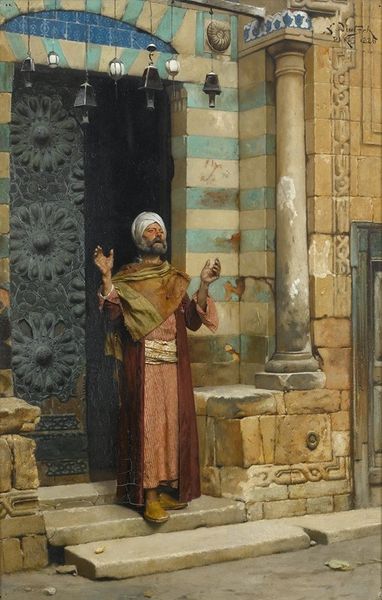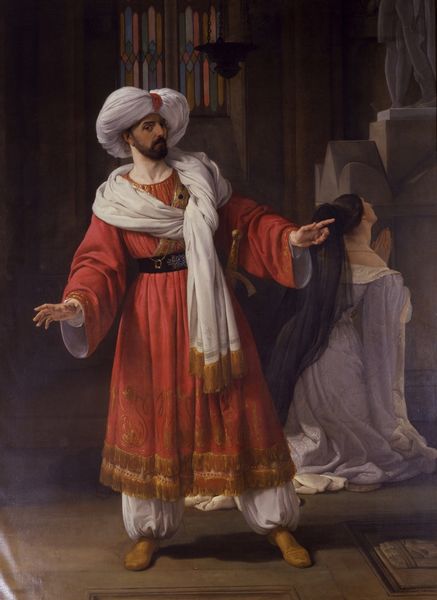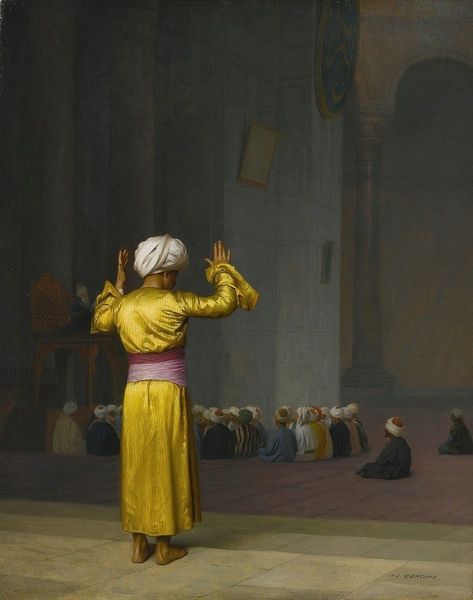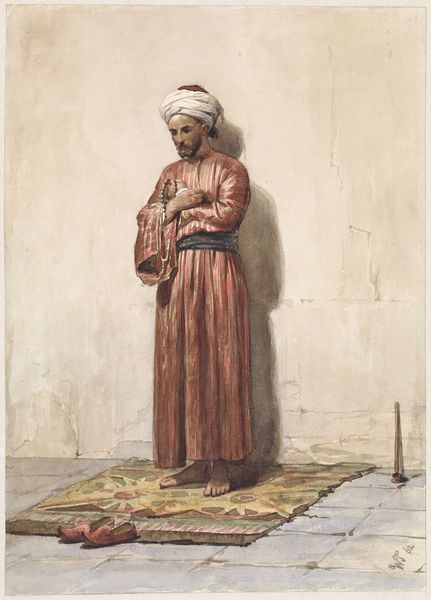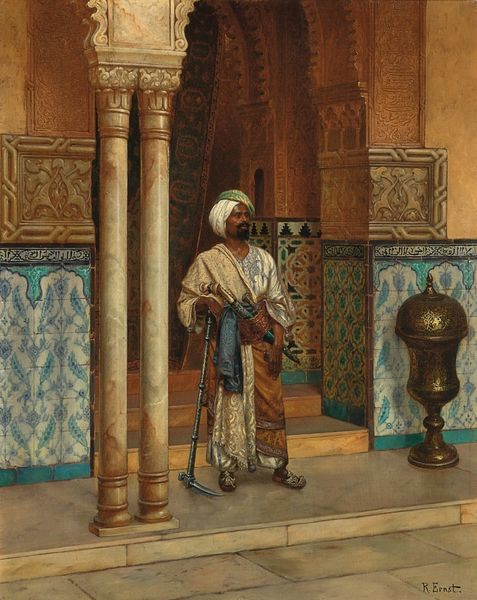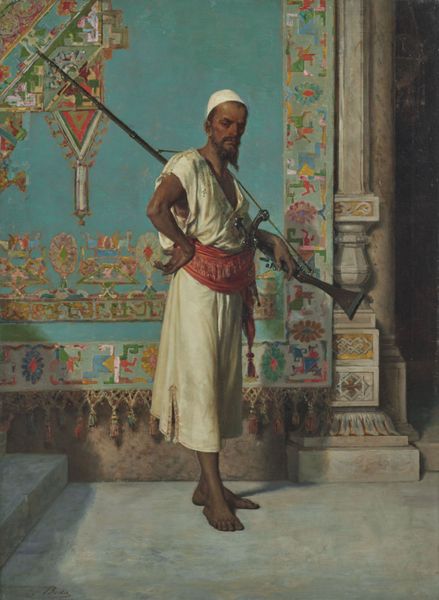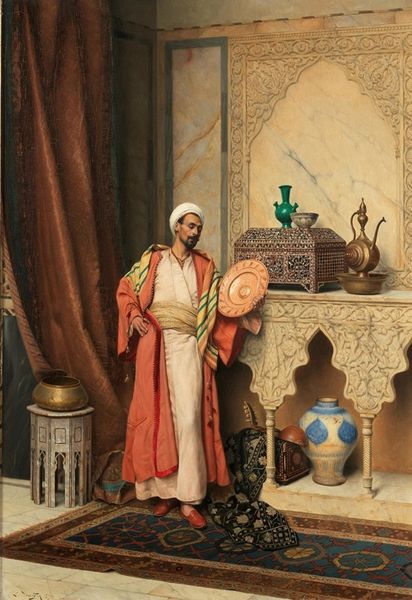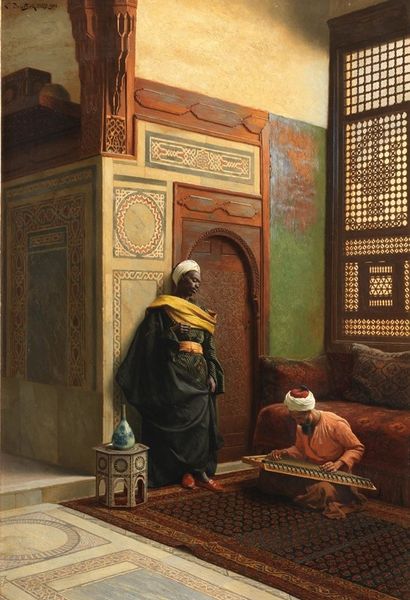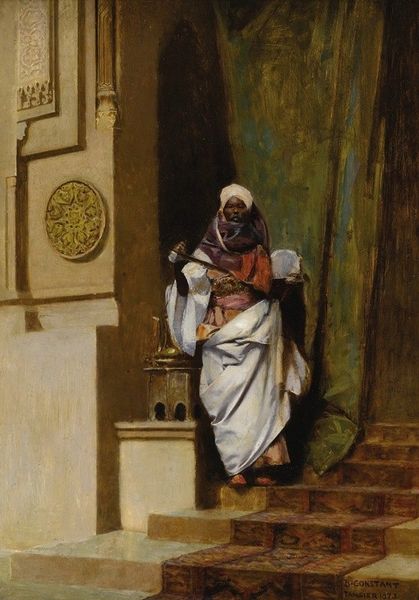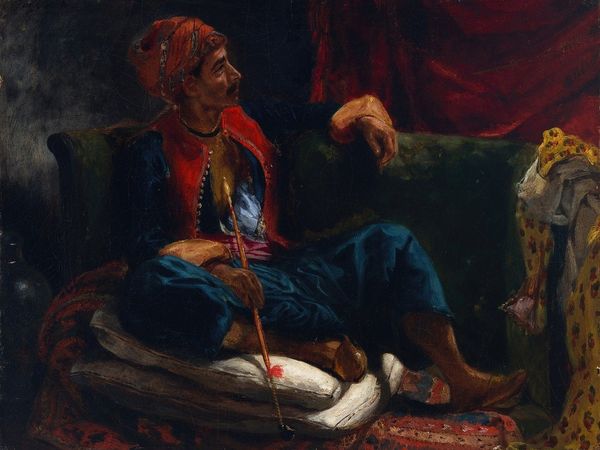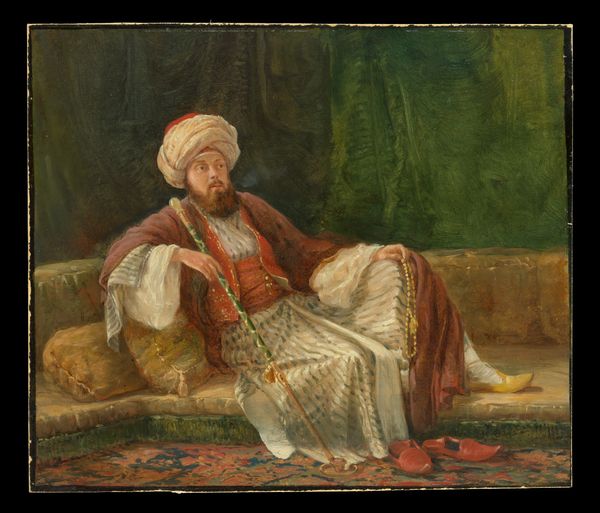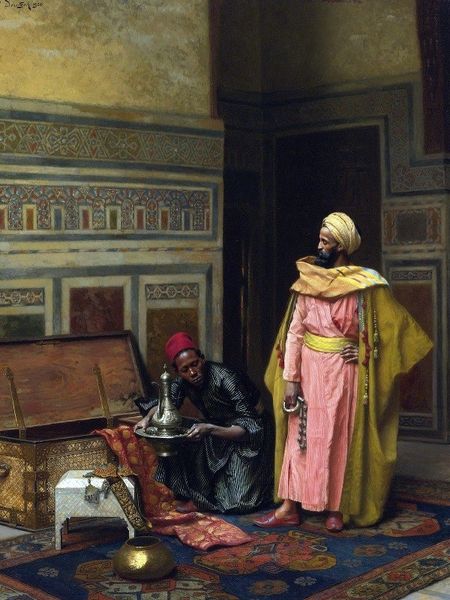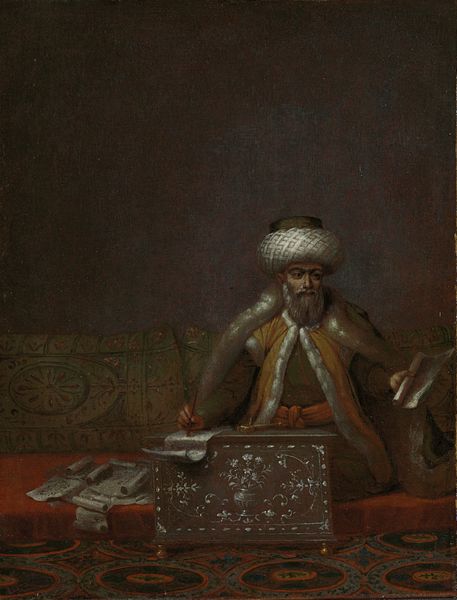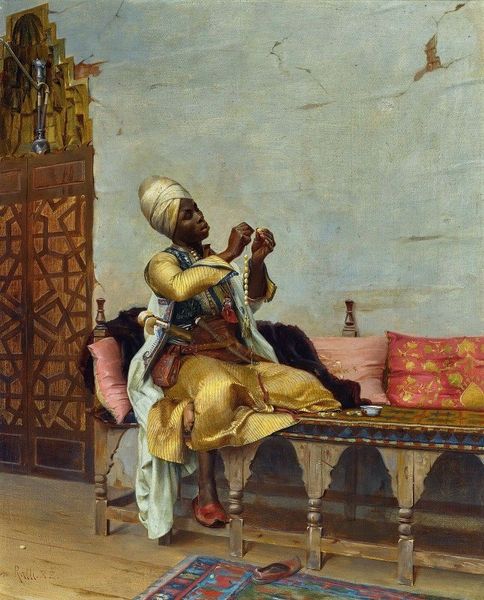
Copyright: Public Domain: Artvee
Curator: What a captivating study of faith. This is Jean-Léon Gérôme's "At Prayer," painted in 1858, an oil-on-canvas work. Editor: Yes, the muted palette and that focused light… I'm struck by the way the geometry of the architectural details contrasts with the soft fabric textures. A kind of serene austerity prevails. Curator: Indeed. It's essential to remember the Orientalist context of its creation. Gerome aimed for meticulous realism. The texture of the prayer rug, the gleam of the scimitar, all point to material accuracy. Consider the markets where he may have acquired such objects, the social dynamics… Editor: The objects certainly contribute to the image's success as a carefully balanced composition. That sword at the waist slices into the softer composition created by the robe and the posture. Look at the prayer rug's designs: the script echoes and supports the figural content so elegantly. Curator: His process clearly involved extensive research into Islamic culture. While commendable, his artistic output contributes to and reflects specific modes of cultural consumption and understanding within a nineteenth-century Western European milieu. He was reproducing images for a certain market. Editor: The almost photographic precision certainly aims for a kind of truth, doesn't it? Though, to your point, filtered through a particular lens, certainly. The raking light creates depth and three-dimensionality. Gérôme clearly knew his way around form and color theory. Curator: Absolutely, and in examining the canvas itself and the pigments, one finds the technical mastery integral to creating such illusions. The layered glazes are key here—Gérôme's labor, and that of his suppliers, contribute vitally to the final work and to our viewing of it now. Editor: Looking closely, the arabesques carved into the plaster feel significant too—they act as another form of script, mirroring that on the carpet, creating visual harmony through pattern and repetition. What to say about its impact in terms of visuality and faith... it certainly is contemplative. Curator: Yes. Reflecting on the creation of this artwork really underlines for me how cultural narratives get circulated through commodity culture. Editor: And, looking at it the other way around, attending to formal components allows me to consider how technique lends power to faith in this moving, visually stimulating tableau.
Comments
No comments
Be the first to comment and join the conversation on the ultimate creative platform.
